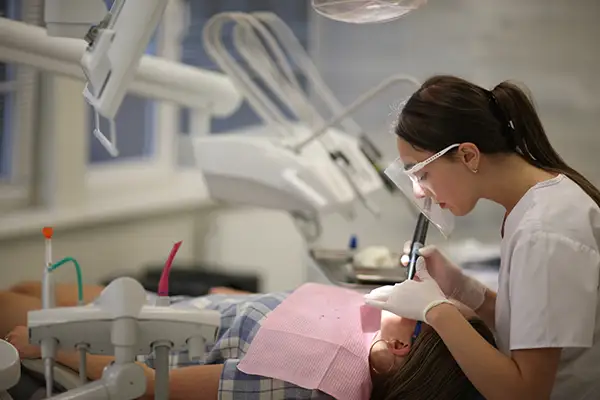Top Four Restorative Procedures You Can Get From Your Dentist
Posted on 6/16/2025 by Strongsville Center for Cosmetic & Implant Dentistry |
 our smile is one of your most valuable assets. It's the first thing people notice about you, and it can have a big impact on your self-confidence. But what happens when your smile isn't as bright and healthy as it could be? That's where restorative procedures come in. our smile is one of your most valuable assets. It's the first thing people notice about you, and it can have a big impact on your self-confidence. But what happens when your smile isn't as bright and healthy as it could be? That's where restorative procedures come in.
Restorative procedures are dental treatments that help to repair or replace damaged teeth. They can improve the function, appearance, and overall health of your smile. If you're considering getting restorative procedures, it's important to understand your options and what to expect.
What are Restorative Procedures?
Restorative procedures are any dental treatment that aims to restore the function, integrity, and aesthetics of damaged or missing teeth. These procedures can range from simple fillings to complex dental implants.
Who Needs Restorative Procedures?
Anyone who has damaged or missing teeth may benefit from restorative procedures. This includes people who have:
| • |
Cavities: Cavities are small holes in the teeth that can be caused by bacteria, sugar, and acid. |
| • |
Cracked or chipped teeth: These can be caused by trauma, grinding your teeth, or biting down on hard objects. |
| • |
Missing teeth: Missing teeth can be caused by tooth decay, gum disease, or trauma. |
| • |
Worn-down teeth: Teeth can become worn down over time due to grinding, clenching, or acidic foods and drinks. |
Top Four Restorative Procedures
There are many different types of restorative procedures available. Here are four of the most common:
| 1~ |
Fillings: Fillings are used to repair small cavities or cracks in the teeth. They are made from a variety of materials, including composite resin, gold, or amalgam. |
| 2~ |
Crowns: Crowns are used to cover and protect a damaged or weakened tooth. They can be made from a variety of materials, including porcelain, gold, or zirconia. |
| 3~ |
Bridges: Bridges are used to replace one or more missing teeth. They are typically made from porcelain or metal and are attached to the teeth on either side of the gap. |
| 4~ |
Dental implants: Dental implants are artificial tooth roots that are surgically implanted into the jawbone. They provide a strong and stable foundation for crowns, bridges, or dentures. |
Benefits of Restorative Procedures
Restorative procedures offer a number of benefits, including:
| • |
Improved oral health: Restorative procedures can help to prevent further damage to your teeth and gums. |
| • |
Enhanced appearance: Restorative procedures can improve the appearance of your smile, making you feel more confident. |
| • |
Improved function: Restorative procedures can restore the function of your teeth, making it easier to eat, speak, and smile. |
What to Expect
If you're considering getting restorative procedures, it's important to talk to your dentist about your options and what to expect. The specific procedures you need will depend on the condition of your teeth and your individual goals.
Restorative procedures are typically performed in a dental office under local anesthesia. The procedure itself may take anywhere from a few minutes to a few hours, depending on the complexity of the procedure.
After the procedure, you may experience some discomfort or swelling. Your dentist will give you instructions on how to care for your mouth and teeth after the procedure.
Conclusion
Restorative procedures are a valuable tool for improving the health, function, and appearance of your smile. If you're considering getting restorative procedures, talk to your dentist about your options and what to expect.
|
|
